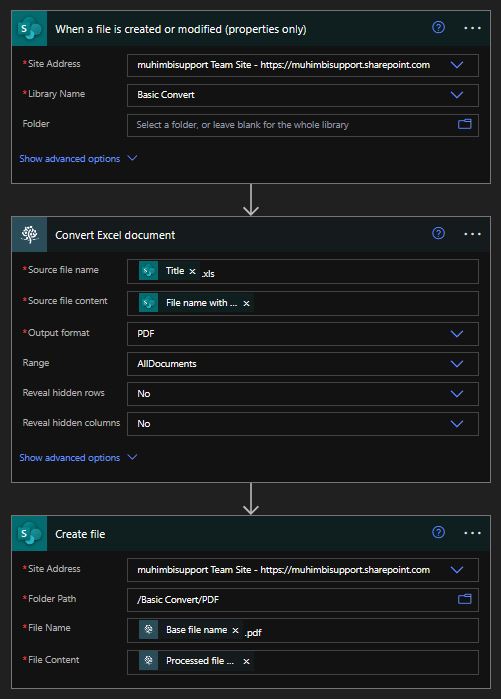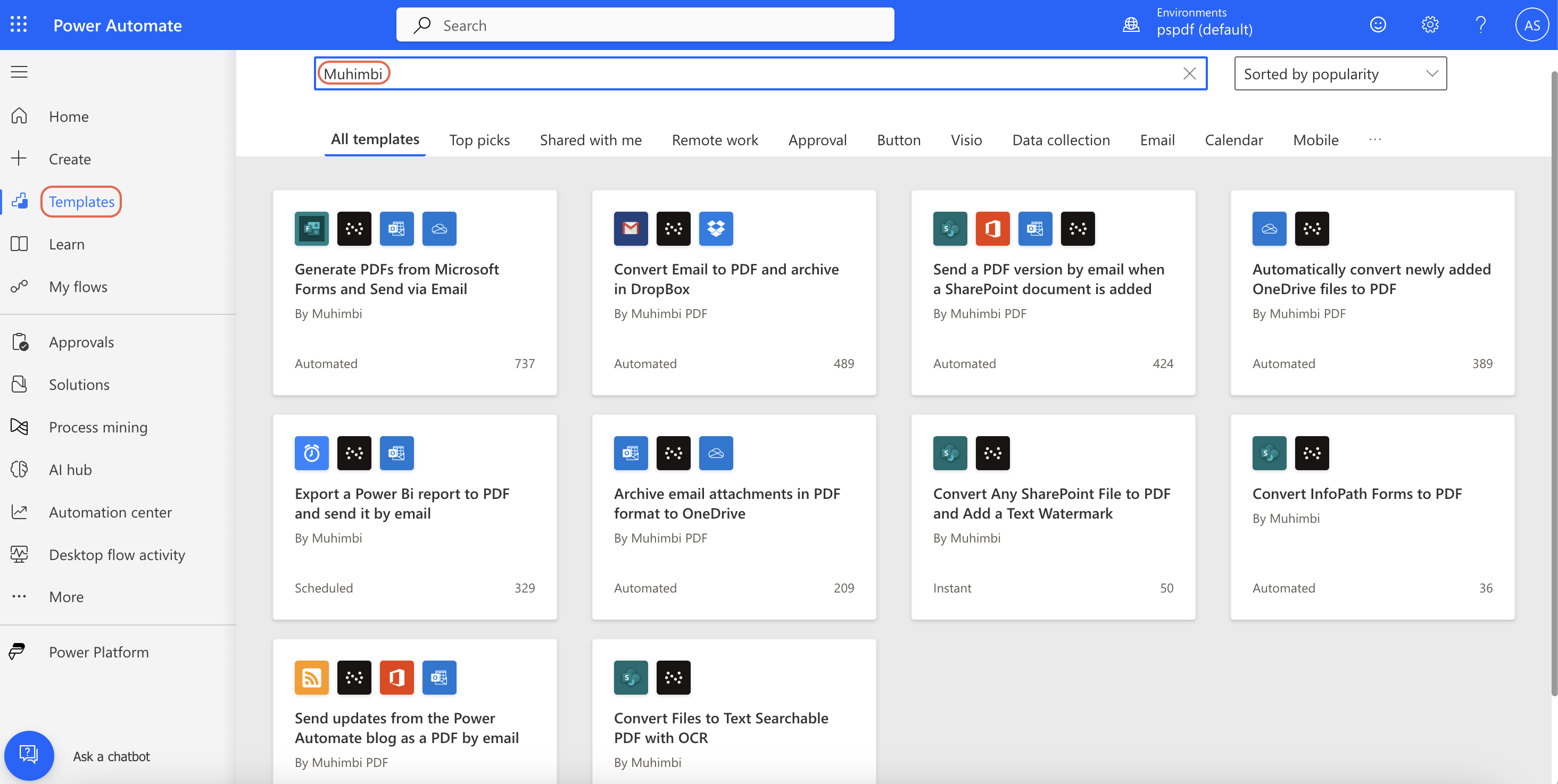Save Excel as PDF using Power Automate
In this guide you’ll learn how to save an Excel file to PDF using Power Automate and Muhimbi PDF Connector. We support saving both XLS or XLSX files to PDF and all other standard Office documents.
It’s also important to note that you can easily customize this example to save your excel file to destinations like Dropbox, Google Drive, OneDrive, or any platform supported by Power Automate.
From a high-level perspective, the steps to create are as follows:
1: Create a new flow
Create a new Flow and use the SharePoint Online trigger ‘When a file is created or modified (properties only)’. Fill out the Site Address, Library Name, and Folder.
2: Convert Excel to PDF with Power Automate
Insert Muhimbi’s ‘Convert Excel document’ action and fill it out as per the screenshot displayed below. Naturally, you will need to substitute the Source file name and Source file content with suitable values.
3: Create a file
Insert a ‘Create File’ action to write the converted file back to SharePoint Online (or Dropbox, OneDrive, or Google Drive, or send the PDF via email).
4: Publish the file
Publish the workflow and create or update an MS Excel (XLS) file to the specified document library. After a few seconds, the Flow will trigger and a PDF file will be generated.

Troubleshooting/caveats
HTML is not the best format for print or PDF Conversion purposes. Depending on your exact needs and source material, you may need to experiment with various available settings. If you have any questions or require assistance please feel free to contact us.
Consider the following when using Power Automate:
-
Modern Views: In SharePoint Online it is possible to display Lists and Libraries in Modern or Classic mode. Modern View is undergoing constant change (by Microsoft), as a result, we currently only support the conversion of pages displayed in Classic View. Some Modern View pages will convert fine while others don’t.
-
Multi-Factor Authentication (MFA): An increasing number of SharePoint Online / Office 365 environments are secured using MFA. Although this is a positive development, it gets in the way of automated systems such as our HTML converter. If your environment uses MFA then please create an App password for HTML conversions, or disable MFA on your HTML Conversion account.
-
HTML Conversion option not displayed: The option to convert the current page to PDF is only available on Classic SharePoint pages. Modern pages currently do not provide a facility for extending the personal actions menu. We will make sure it is added as soon as Microsoft makes this functionality available.
-
PDF Layout does not match: By default, the page being converted is optimized for print / PDF output. If you prefer the PDF to look exactly like what is displayed on the screen, including user interface elements, then set the Media Type to Screen in the HTML Conversion configuration screen.
-
User-modified content is not converted: The converter does not have knowledge about the information currently displayed in the user’s browser (e.g. size of the browser window, or custom data entered, but not yet submitted to the server). The converter always requests a fresh copy of the URL and converts that information to PDF.
-
User-specific information is missing: HTML Conversion is carried out in the context of the configured user account, though the system is not aware of the user carrying out the HTML conversion. Don’t specify accounts that display more information than what the users need to have access to.
Additional resources
Power Automate templates
To accelerate your workflow, we’ve curated a selection of ready-to-use templates within Power Automate. Access these resources by logging in to your Power Automate account and searching for the templates listed below by their precise names:
-
Generate PDFs from Microsoft Forms and Send via Email
-
Convert Email to PDF and archive in DropBox
-
Send a PDF version by email when a SharePoint document is added
-
Automatically convert newly added OneDrive files to PDF
-
Export a Power Bi report to PDF and send it by email
-
Archive email attachments in PDF format to OneDrive
-
Convert Any SharePoint File to PDF and Add a Text Watermark
-
Convert InfoPath Forms to PDF
-
Send updates from the Power Automate blog as a PDF by email
-
Convert Files to Text Searchable PDF with OCR
